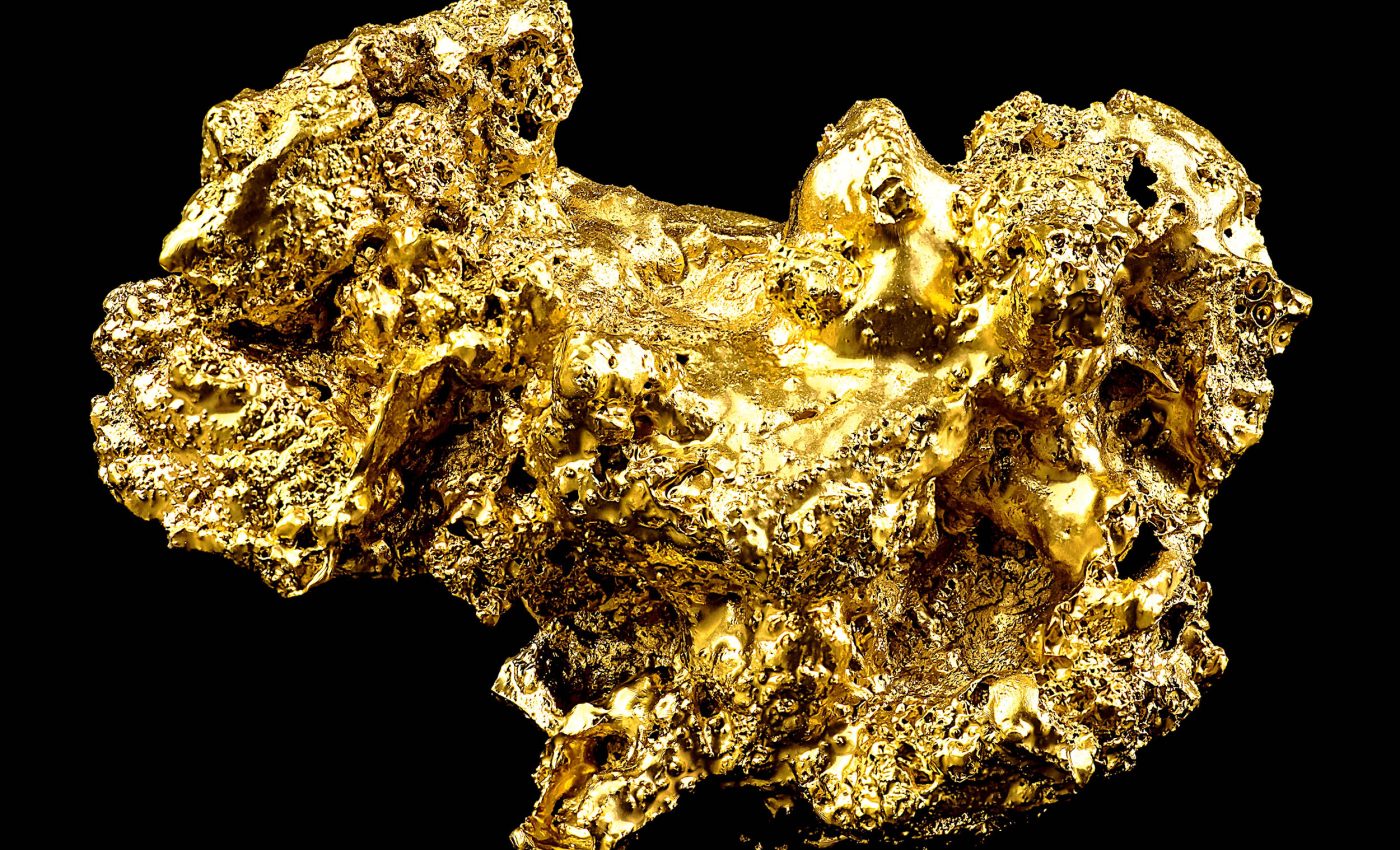
Geologists discover that earthquakes play a role in what's called the 'gold nugget paradox'
The average mine pulled an estimated 3,661 tons of gold from Earth’s crust in 2024, stretching veins ever deeper in search of the yellow metal. Yet even the biggest operations struggle to explain how house‑sized gold nuggets form inside hard rock.
Dr Christopher Voisey, a geochemist at Monash University in Melbourne, leads the team that now points to earthquakes as the missing link.
Most gold nuggets sit inside quartz fractures that account for roughly three‑quarters of all gold ever mined.
Until now, geologists couldn’t reconcile such hefty masses with the trickle of metal dissolved in subterranean water – hydrothermal fluids that carry gold in amounts rarely exceeding a few parts per billion.
“This mechanism can help explain the creation of large nuggets and the commonly observed highly interconnected gold networks within quartz vein fractures,” Voisey said.
The team’s study pushes the idea that earthquakes play a role in creating large nuggets, solving the long‑standing “gold‑nugget paradox.”
Earthquakes, electricity, and gold nuggets
Quartz dominates continental crust and, importantly, it is the only abundant piezoelectric mineral, meaning its crystal lattice separates charge when squeezed.
This research shows that each seismic pulse can turn a quartz vein into a tiny natural battery whose field attracts positively charged gold complexes, stripping them from surrounding fluids almost instantly.
A moderate fault rupture produces pressures exceeding 15,000 pounds per square inch, more than enough to bend quartz crystals and raise electric potentials of several hundred volts across microscopic distances.
Although the voltage appears and disappears in less than a second, the charged surface persists long enough for gold ions to settle out and nucleate.
At the nanoscale, those first atoms become conductive seeds, so every subsequent quake preferentially plates fresh metal onto existing grains, accelerating growth.
Voisey’s models suggest that after a few thousand seismic events, a realistic tally for a million‑year fault, ten‑kilogram nuggets can accrete without needing Olympic‑size volumes of water.
Independent structural geologist Dr Taija Torvela, University of Leeds, calls the work “thought‑provoking” and adds that it explains why early quartz veins are often barren until stress cycles build up over time.
Sparking gold nuggets in the lab
To prove the concept, the team immersed centimeter‑scale quartz blocks in gold‑bearing fluid and fired mechanical shocks that mimicked the strain spectrum of magnitude‑5 earthquakes.
Within minutes, transmission electron microscopy revealed nanoparticles of elemental gold clustering on crystal faces, confirming that the electric field alone was strong enough to reduce ionic gold.
By scaling the experiment with numerical simulations of crustal fault networks, the authors calculated that real veins experience comparable fields every time a seismic wave passes.
Because quartz is an insulator while gold is a conductor, once the first specks form the system becomes a self‑focusing electrode, future pulses route charge through the metal, thickening the nugget like electroplating on an industrial cathode.
The process also leaves no chemical halo, clarifying why many nuggets appear to “float” in open fractures with no obvious precipitate zone.
A map for modern prospectors
If volts grow gold, then the richest deposits should cluster where brittle crust holds both quartz and an active history of small‑to‑moderate quakes.
That insight may refine exploration models that currently rely on geochemical sampling and magnetic surveys, often missing blind veins buried beneath cover rock.
Geophysicists are already testing passive seismic arrays to locate faults that slip frequently enough to generate repeated piezoelectric bursts.
Meanwhile, mining engineers wonder whether controlled acoustic stimulation, essentially shaking rock in situ, could coax residual gold from low‑grade veins into recoverable clusters.
Any commercial leap will require evidence that the electric discharges leave a measurable surface marker, such as charge‑induced alteration halos or distinct crystal textures.
Questions left on the fault line
Field teams now plan to drill cores through seismically active gold camps in Victoria, Australia, and compare grain‐growth patterns to modeled discharge histories.
They also hope to measure transient electric signals during natural earthquakes, a test that would link lab data to real‑world faults and perhaps aid early‑warning systems.
Whether other precious metals behave the same way is another open question; silver and platinum ions share chemistry with gold and might follow similar electro‑accumulation pathways under stress.
Finally, the work underscores how intimately Earth’s mechanical and chemical engines connect, turning violent motion into quiet mineral wealth just inches apart inside dark fractures.
If this process shaped gold formation today, it may have played a critical role in Earth’s early mineral evolution.
Billions of years ago, when tectonic activity was far more intense, piezoelectric effects could have generated vast gold systems deep in the crust.
The same mechanism might even extend beyond Earth. Planets or moons with quartz-like minerals and seismic activity, such as Mars or Europa, may have developed similar metal deposits, offering new targets for future space missions.
The study is published in Nature Geoscience.
—–
Like what you read? Subscribe to our newsletter for engaging articles, exclusive content, and the latest updates.
Check us out on EarthSnap, a free app brought to you by Eric Ralls and Earth.com.
—–













